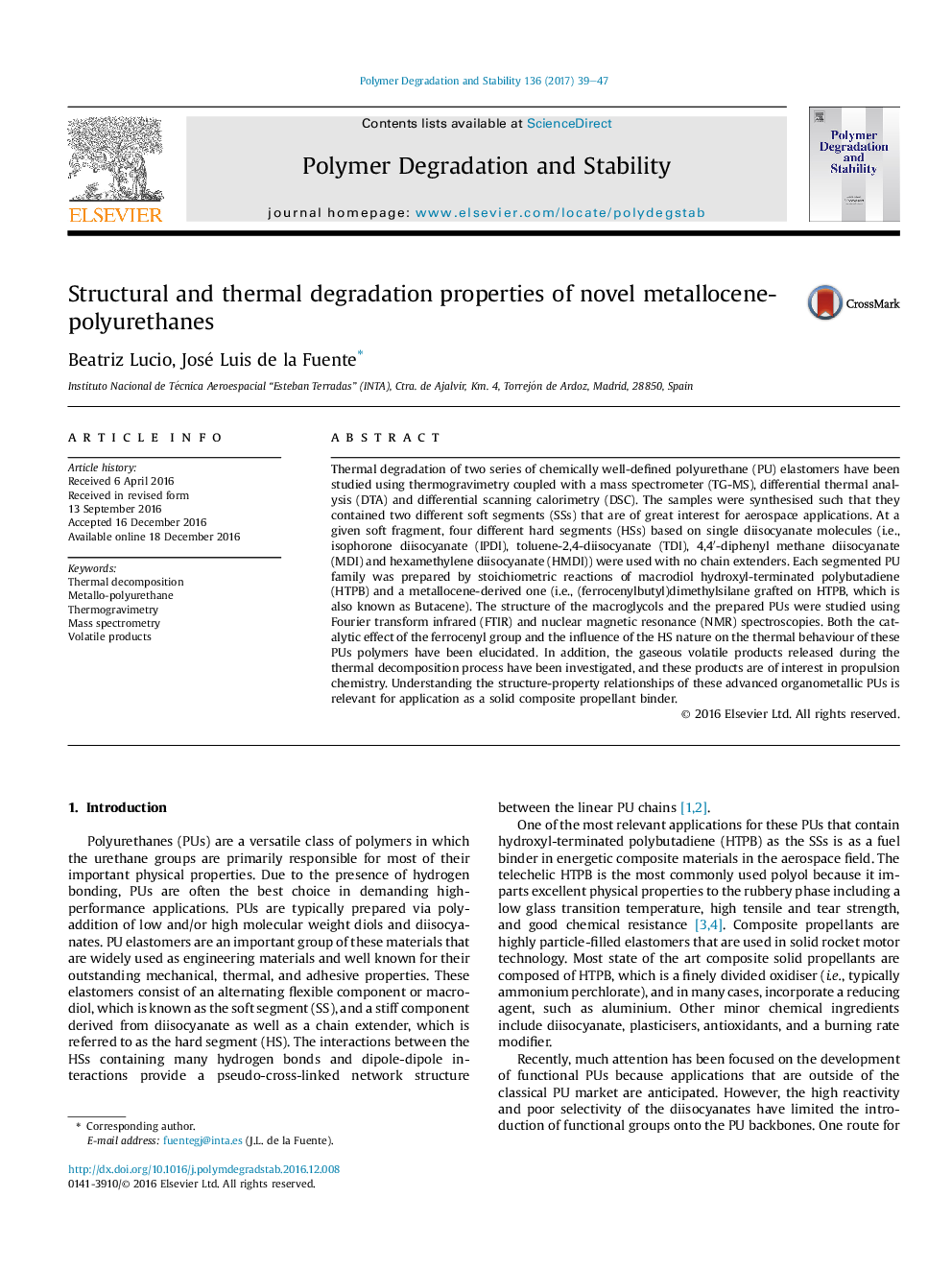| Article ID | Journal | Published Year | Pages | File Type |
|---|---|---|---|---|
| 5200926 | Polymer Degradation and Stability | 2017 | 9 Pages |
Abstract
Thermal degradation of two series of chemically well-defined polyurethane (PU) elastomers have been studied using thermogravimetry coupled with a mass spectrometer (TG-MS), differential thermal analysis (DTA) and differential scanning calorimetry (DSC). The samples were synthesised such that they contained two different soft segments (SSs) that are of great interest for aerospace applications. At a given soft fragment, four different hard segments (HSs) based on single diisocyanate molecules (i.e., isophorone diisocyanate (IPDI), toluene-2,4-diisocyanate (TDI), 4,4â²-diphenyl methane diisocyanate (MDI) and hexamethylene diisocyanate (HMDI)) were used with no chain extenders. Each segmented PU family was prepared by stoichiometric reactions of macrodiol hydroxyl-terminated polybutadiene (HTPB) and a metallocene-derived one (i.e., (ferrocenylbutyl)dimethylsilane grafted on HTPB, which is also known as Butacene). The structure of the macroglycols and the prepared PUs were studied using Fourier transform infrared (FTIR) and nuclear magnetic resonance (NMR) spectroscopies. Both the catalytic effect of the ferrocenyl group and the influence of the HS nature on the thermal behaviour of these PUs polymers have been elucidated. In addition, the gaseous volatile products released during the thermal decomposition process have been investigated, and these products are of interest in propulsion chemistry. Understanding the structure-property relationships of these advanced organometallic PUs is relevant for application as a solid composite propellant binder.
Related Topics
Physical Sciences and Engineering
Chemistry
Organic Chemistry
Authors
Beatriz Lucio, José Luis de la Fuente,
